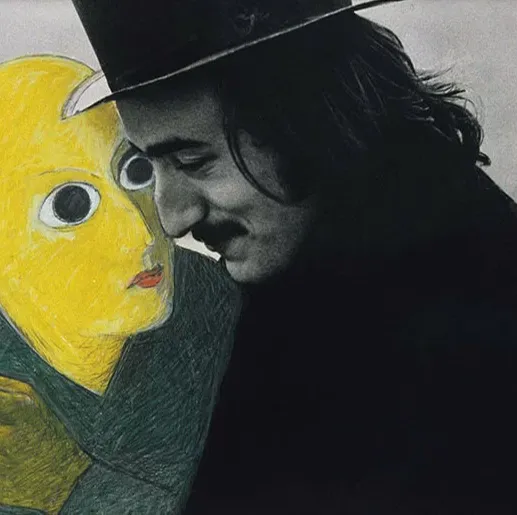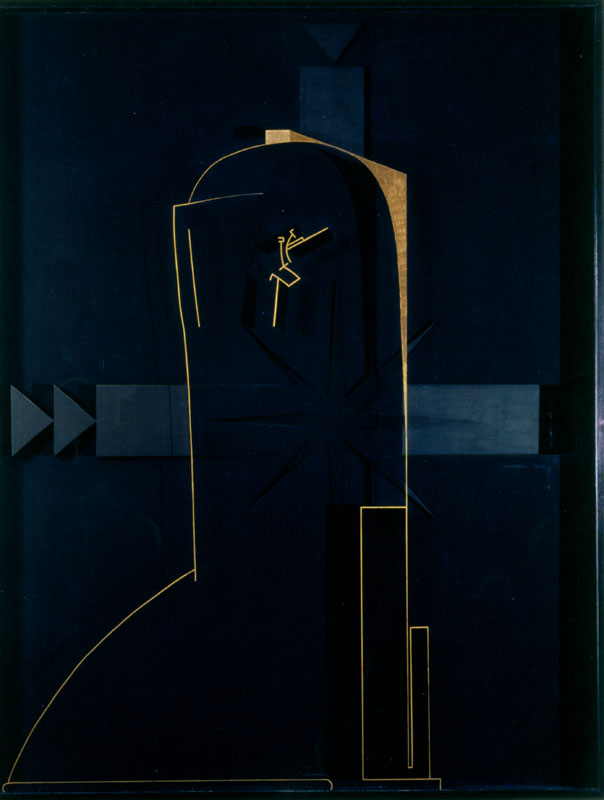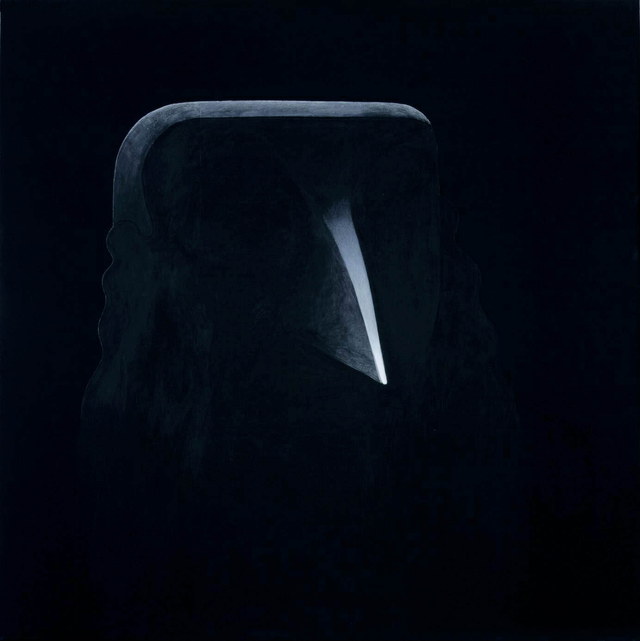
Gino De Dominicis
Gino De Dominicis is one of the most discussed Italian artists of the 20th century. His artistic oeuvre transcended contemporary trends and neo-avant-garde movements, positioning him as a singular figure in the art world. What made him even more intriguing was his steadfast refusal to allow his works to be photographed, further shrouding his creations in mystique.
Biography of Gino De Dominicis
Gino De Dominicis, born in 1947 in Ancona, Italy, and residing in Rome until his passing in 1998, embarked on an artistic journey marked by distinct phases and intellectual exploration. De Dominicis initially pursued studies in art and architecture in Rome, where the guidance of Edgardo Mannucci played a pivotal role in shaping his distinctive artistic vision.
In 1968, De Dominicis relocated to Rome after a series of journeys and came into contact with the Via Brunetti group, known as Laboratorio 70, comprised of artists like Gianfranco Notargiacomo, Paolo Matteucci, and Marcello Grottesi. De Dominicis sought entry into this collective, engaging directly with Grottesi, and was eventually granted admission.
His debut exhibition took place at Rome's Galleria L'Attico in 1969, offering an early glimpse into his unique artistic perspective.
In 1970, De Dominicis published his "Letter on Immortality," a theoretical manifesto that articulated his artistic inquiry. This work delved deeply into the themes of time and the pursuit of physical immortality, exploring the delicate boundary between the visible and the invisible.
In November 1970, at the Franco Toselli Gallery in Milan, De Dominicis unveiled a series of works, including a ball, a stone, and an invisible cylinder. Among these intriguing pieces were the "radioactive object," two identical jars, and a cat adorned with a tag proclaiming the postulate of the "Second Immortality Solution."
Between 1985 and 1986, De Dominicis contributed to a group exhibition in Washington titled "A New Romanticism," featuring sixteen artists from Italy.
His final exhibition, titled "in pieno Kali-yuga," took place at the Galleria Emilio Mazzoli in Modena in 1998, just six months prior to his passing.
Evolution of De Dominicis's Artistic Phases
Gino De Dominicis's artistic journey unfolds in two distinct phases. The first phase, spanning the late 1960s and 1970s, saw the artist primarily engaged in installations and sculpture. The second phase, commencing in the early 1980s and continuing until his passing, witnessed a significant shift in focus toward figurative painting.
De Dominicis's art is a profound exploration of recurring themes, most notably, the concepts of death and immortality. His work delved into the seemingly impossible, aiming to arrest the relentless march of time and decipher the role of art in this pursuit.
Controversy Unleashed at the 1972 Venice Biennale
The opening day of the 1972 Venice Biennale marked a pivotal moment when Gino De Dominicis unveiled an installation, titled "Second Solution of Immortality (The Universe is Immobile)." This unconventional display comprised three key elements: a square etched on the ground, a ball, and a stone. What ignited a significant controversy was the presence of a young man with Down syndrome, overseeing these enigmatic objects.
The young man, seated in front of the viewers for only a brief period, garnered considerable attention and scrutiny. In subsequent days, he was replaced by a girl, but this maneuver did little to quell the growing debate. Matters escalated to the extent that the public prosecutor's office of Venice had to intervene, ultimately closing the exhibition room and charging the artist with the exploitation of an incapable person.
Gino De Dominicis's Art Style
De Dominicis's works are characterized by a surreal transformation of figures. Facial features such as noses, eyes, mouths, and eyebrows undergo elongation, sometimes manifesting as delicate fissures. Surreal imagery often includes minuscule fork-like hands and beak-like crania, juxtaposed against out-of-proportion arms, torsos, and legs. This distortion serves as a powerful artistic tool to convey the enigmatic and metaphysical aspects of his subject matter.
The artist delved into the mysteries of ancient myths, reaching back to the dawn of civilization for inspiration. Figures such as Gilgamesh and Urvasi served as significant muses for his creations, infusing his work with the timeless and universal themes that these legends represent.
In "Senza titolo" (Untitled), created in 1988, De Dominicis explored the hypothetical coexistence of the Sumerian king and Urvasi, aligning with his renewed interest in painting. Against a black backdrop, the artist depicted two white silhouettes separated by the image of a prism. This composition captures a pivotal moment where both figures appear to have uncovered a long-sought secret, with their contemplation of the gem shrouded in an enigmatic suspension.
Gino De Dominicis's art, marked by its evolution from sculpture and installations to figurative painting, is a testament to his deep engagement with themes that resonate with the human condition, inviting viewers to explore the profound and the metaphysical in their own unique ways.
In the 1990s, Gino De Dominicis embarked on a captivating artistic transformation, embracing more stylized and expressive forms in his work. This phase witnessed the introduction of bold and striking color combinations, with black and gold, a particular favorite of the artist, and red and black emerging as prominent choices.
De Dominicis, during this period, employed the pencil as a primary medium, yielding remarkable and highly expressive results. His creations featured sneering faces, hunched bodies, and squinting eyes, with notable examples including the figures crafted between 1996 and 1997. Additionally, his exploration of the human form led to the creation of a unique concept in 1991—a couple seamlessly merged into a single, intriguing figure.
This artistic evolution showcased De Dominicis' ability to adapt and innovate, revealing a profound commitment to the exploration of form and expression. The vibrant use of color and the emergence of new figural styles marked a significant chapter in the artist's creative journey during this decade.
Years:
Born in 1947
Country:
Italy, Ancona
Gallery:

